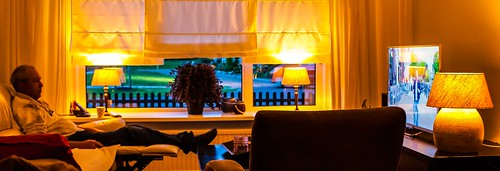 |
| Photo by Yasmina H on Unsplash |
Everyone seems to be writing reviews of this crazy year so here's my attempt. At the end I include some really good articles for deeper insights.
Institutions that managed the digital transformation well have a number of common factors. Firstly they had experience in online course delivery and a strategic approach to digitalisation with a good digital infrastructure including a learning management system, media platform and anti-plagiarism tool. Teachers were already trained in designing and running online and blended courses, often with the support of educational technologists, media specialists and course designers. Furthermore, they used a mix of synchronous and asynchronous interaction forms to ensure student engagement.
At the same time the crisis revealed many problem areas, though some were societal rather than educational issues. Many students were marginalised due to poor internet access or not being able to afford a digital device, whilst others did not have a suitable study environment in their homes. Since they had enrolled on a campus-based programme, many students lacked the necessary study skills to learn effectively online and became isolated from colleagues. Even when students have been satisfied with the online teaching they received, they found the lack of social interaction extremely demotivating. Teaching online is not just about delivering course material and tests, it is vital to create a community of trust and opportunities for social interaction and informal discussion. Building relationships is an essential part of learning. Future course design teams must take these factors into consideration and build in more support structures.
However, there have been many positive effects of the crisis. Firstly, it has placed an unprecedented focus on online education and forced all institutions to rethink their operations. This involves offering teachers training programmes and workshops to share good practice and develop a coherent approach to online education. Institutions have discovered the need to employ educational technologists who combine technical and pedagogical skills and can help teachers manage the transition in a structured manner. Teachers have also begun to create a culture of sharing by forming, for example, social media communities where they can ask questions, discuss, share good ideas and resources with teachers from other institutions around the country. There has also been a wave of guidelines, resources, online courses, webinars and digital conferences offering support to teachers and students on how to teach and study effectively online.
What lessons can we learn from this experience and what conclusions can we make?
- Online and distance learning requires careful planning and new skills. Institutions need to implement strategies for digital development and provide necessary competence development for teachers.
- Courses must be reviewed and redesigned to fully integrate digital elements. This demands teamwork between different competences: teachers, educational technologists, media production, librarians. Digital platforms and tools are integrated into campus teaching.
- New forms of assessment and examination are needed in the digital space. There will be increased focus on formative assessment, oral examination, project and problem-based learning.
- Greater flexibility of how students access their courses with greater integration between online and on-site as well as more blended learning solutions. The digital campus will become an established concept with a variety of platforms to facilitate networking, socialisation and collaboration as well as teaching and learning.
- Online conferences will continue to thrive, largely replacing expensive and unsustainable international on-site conferences.
- Virtual mobility programmes will become the most widespread internationalisation strategy as physical mobility becomes more restricted due to sustainability concerns and travel restrictions in the wake of covid-19.
A global outlook to the interruption of education due to COVID-19 Pandemic: Navigating in a time of uncertainty and crisis. Asian Journal of distance education, Vol 15 Issue 1, 2020.
Martin, F., Polly, D., Ritzhaupt, A. (2020) Bichronous Online Learning: Blending Asynchronous and Synchronous Online Learning, Educause Review.
UNESCO, UNICEF and the World Bank (2020). What have we learnt? Overview of findings from a survey of ministries of education on national responses to COVID-19.Paris, New York, Washington D.C.
Vollbrecht, P. J., Porter-Stransky, K., & Lackey-Cornelison, W. L. (2020). Lessons learned while creating an effective emergency remote learning environment for students during the COVID-19 pandemic. https://doi.org/10.1152/advan.00140.2020
















